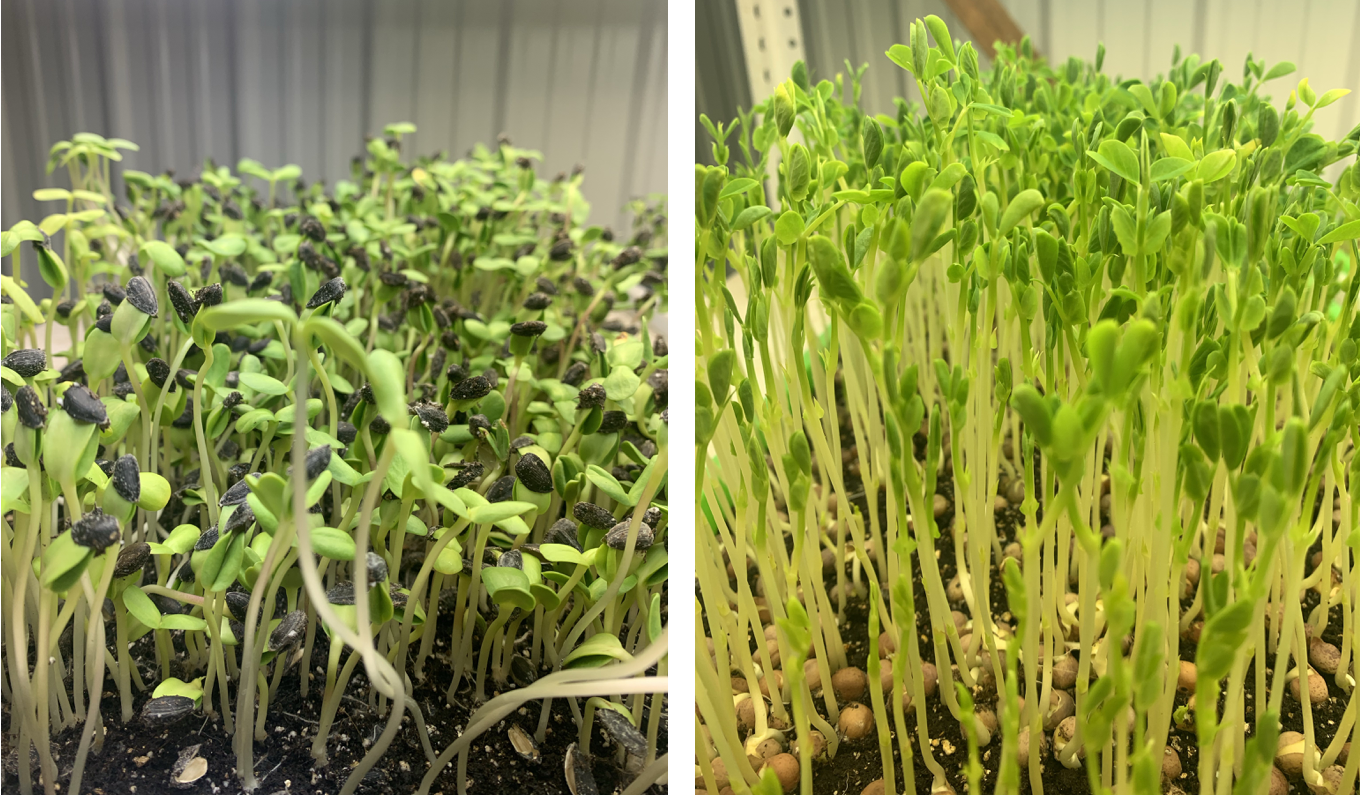Athletic Greens supplements, also known as green superfood powder, are dietary supplements that have gained popularity in recent years due to their high nutrient content and potential health benefits. You may have heard their sponsored ads on podcasts you’ve listened to…they’re all over the podcasting world right now. Have you ever wondered what the difference is between Athletic Greens and microgreens?
Here at Full Circle we prefer the whole food counterpart that we grow on our small family farm: microgreens! Microgreens are young vegetable greens that are harvested just a few weeks after germination, typically at about 10 days old. These tiny greens are packed with vitamins and minerals, including Vitamin C, Vitamin K, and Vitamin E. They also contain beneficial enzymes, such as peroxidase and catalase. In fact, a study published in the Journal of Agricultural and Food Chemistry found that microgreens can contain up to 40 times higher levels of vital nutrients compared to mature plants of the same species. Additionally, microgreens are a great source of antioxidants, which can help to protect the body against damage from free radicals.
Microgreens are truly tiny powerhouses, both in terms of nutrition and flavor. On our farm we use regenerative and organic farming practices to grow a variety of delicious, nutritious microgreens, including broccoli, radish, pea, sunflower, cilantro, melon and basil. Their intense flavor can be more pronounced than the mature vegetables, so they’re often used as a garnish or added to salads, sandwiches, and other dishes for a nutritional and flavor boost–but we like to snack on them straight from the bag, too. One of our favorite things about microgreens is that you can keep it local by either growing them at home or purchasing from your local farmer. Organic sunflower, radish, and pea microgreens are especially beneficial for those living in colder climates like the Midwest US during the winter months when locally-grown fresh fruits and vegetables are harder to find. Microgreens can be easily grown indoors, providing a fresh and nutritious whole food option during the colder months.
A wonderful garnish of power mix microgreens (pea, radish, and sunflower) on beet risotto.
Athletic Greens supplements, on the other hand, are a green superfood powder that aims to provide comprehensive nutritional support. Formulated with a blend of nutrient-rich fruits, vegetables, and herbs, as well as probiotics and digestive enzymes, this supplement is easy to consume, and a convenient way to boost daily nutritional intake and support overall wellness. Athletic Greens can help fill nutritional gaps in a diet, promote digestion and can be consumed daily as part of a healthy routine. The exact formulation may vary depending on the brand, but most products include a combination of greens, such as spirulina, chlorella, and barley grass, as well as other nutrient-rich ingredients like wheatgrass, and aloe vera. The supplement is designed to provide a broad range of micronutrients and other beneficial compounds, such as antioxidants, enzymes, and phytonutrients.
While more research is needed to fully understand the potential health benefits of these supplements, several studies have shown promising results. One study published in the Journal of Medicinal Food found that daily consumption of a green superfood powder containing similar ingredients to Athletic Greens supplements led to improved antioxidant status and reduced inflammation in healthy adults. Another study published in the Journal of the International Society of Sports Nutrition found that daily consumption of a similar supplement led to improved physical performance and recovery in athletes. When comparing microgreens to athletic greens supplements, however, it is important to note that microgreens are a whole food, meaning they contain all the necessary nutrients in their natural form meaning that if you eat the same serving size of microgreens, you don’t need the athletic greens powder. Supplements, on the other hand, are isolated forms of specific nutrients and may not provide the same level of overall nutrition.
Microgreens are rad like rainbow radishes.
The best way to ensure optimal nutrient absorption is to consume a diet that is 75-80% unprocessed or minimally processed foods. This means choosing whole foods like fruits, vegetables, whole grains, and lean proteins over processed foods that are often high in added sugars and unhealthy fats. It is recommended that the average adult eat between 5 - 13 servings of fruits and vegetables daily. Both microgreens and Athletic Greens supplements provide essential vitamins, minerals, and antioxidants to support overall health. Both are delicious and can be consumed as part of a healthy diet. It is important to consult with a healthcare provider before adding any supplement to a diet, and to always prioritize whole foods like fruits, vegetables, whole grains, and lean proteins over processed foods that are often high in added sugars and unhealthy fats.





